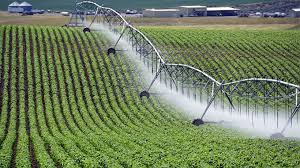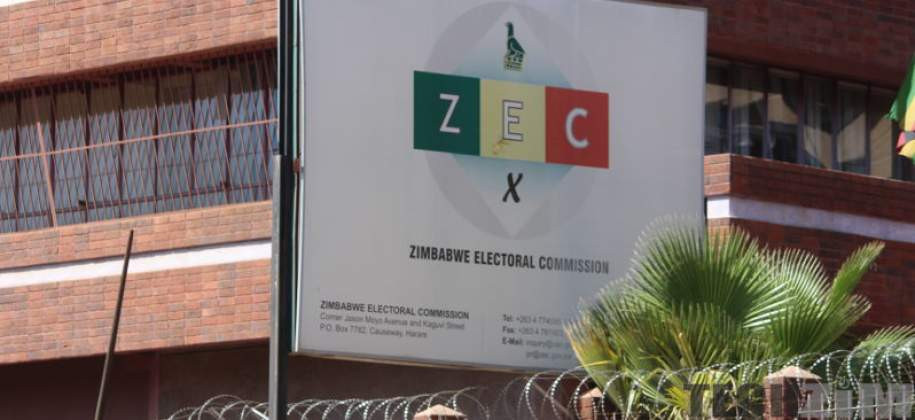
Technological advancements are moving at supersonic speed. No one has the capability of slowing this down. This means a day, not far off, is arriving when telecoms infrastructure costing hundreds of millions of dollars will be rendered obsolete. Instead of escalating investments in telecoms infrastructure, operators are advised to explore satellite connectivity powered by AI, as an alternative.
Unconfirmed rumours are abound that Elon Musk, the South Africa-born tech mogul may be heading back to his roots, “eyeing the Denel Overberg Test Range near Cape Town, as a potential launch site for SpaceX and Starlink operations.”
Schalk Burger, writing online on August 1, said: “this is expected to be a huge turning point for Africa and Musk’s global satellite mission, as Starlink could be a life-changing leap forward connecting schools, clinics and small businesses across rural Africa...”
This has far-reaching implications for financial services product development and inclusion in sub Saharan Africa as satellite connectivity overtakes telecoms infrastructure.
Zimbabwe’s current digital financial ecosystem depends heavily on ground-based telecom networks. While these networks have facilitated mobile banking, mobile money and other digital services, their coverage remains uneven, especially in remote and rural areas. This digital divide limits the reach of financial institutions and perpetuates exclusion of marginalised communities. But new kids on the block such as Old Mutuals’ Omari and Simbisa Brands’ Innbucks are already harvesting benefits in financial services without riding on any mobile network operator.
The future vision of satellite technology, particularly low earth orbit (LEO) satellite system, has potential to provide widespread, reliable and high-speed internet access nationwide. This includes areas where terrestrial infrastructure is sparse or non-existent. Transitioning to satellite based connectivity will enable proactive financial services companies to extend their reach far beyond current limits, fostering a more inclusive and resilient financial ecosystem.
AI-powered satellite technology
The convergence of satellite technology and AI has potential to revolutionise the financial services landscape, especially in underserved remote regions. This transformation is centred on overcoming infrastructural limitations, enabling data driven decision making and fostering truly inclusive financial ecosystems. In this instalment, we delve into the multi-faceted ways in which satellite powered AI will reshape financial inclusion, highlighting innovations, benefits and strategic implications.
- Open letter to President Mnangagwa
- Feature: ‘It’s worse right now than under Mugabe’: Sikhala pays the price of opposition in solitary cell
- Masvingo turns down fire tender deal
- Human-wildlife conflict drive African wild dogs to extinction
Keep Reading
Extending financial access
Zimbabwe’s vast rural areas, often characterised by rugged terrains, sparse population density and environmental challenges, have historically been difficult to reach via traditional terrestrial telecoms infrastructure.
This geographical barrier has perpetuated financial exclusion, as mobile network coverage remains patchy or non-existent in many remote villages.
Satellite technology, particularly LEO satellites, offers a transformative solution. Unlike traditional geostationary satellites, LEO satellites orbit closer to Earth, providing lower latency, higher bandwidth and more reliable broadband coverage. This technology blankets even the most isolated regions with high-speed internet, effectively bridging the digital divide.
Enabling mobile banking
Once satellite connectivity is established, proactive financial services companies would be able to deploy mobile banking applications in areas previously deemed unserviceable. This means residents in remote villages would be able to access savings accounts, conduct transactions and apply for microloans without needing physical bank branches nearby.
Real time credit and risk assessment
AI algorithms integrated with satellite data have the ability to perform real time credit scoring even in data scarce environments. Satellite imagery could provide insights into land use, crop health or livestock conditions, which serve as proxies for income and repayment capacity in rural communities.
When combined with mobile transaction histories and social data, these AI models could potentially generate accurate credit profiles, enabling microfinance providers to extend loans confidently.
Contextually relevant products
With access to local environmental, economic and social data collected via satellite and IoT sensors, financial service providers would be able to create tailored products. Crop insurance policies could be designed based on predicted weather patterns or soil health, increasing relevance and uptake among farmers.
Impact on financial inclusion: This seamless connectivity and data-driven approach fundamentally alter the landscape of financial inclusion. Previously excluded populations, rural farmers, pastoralists, cross-border traders in remote areas, would gain access to essential financial services, fostering entrepreneurship, economic resilience, poverty alleviation and widening the tax base.
Enhancing data-driven credit and risk assessment: Expanding data sources for fair and inclusive credit scoring; Traditional credit scoring relies heavily on financial histories, which are often absent in rural or informal sectors. Satellite technology introduces a new dimension — environmental, infrastructural and socio-economic data, that can significantly improve risk assessments.
Environmental and agric insights: Satellite imagery can monitor crop conditions, soil moisture levels and weather patterns. For farmers, this provides invaluable data for crop yields and potential losses. AI models could analyse these images to assess drought risk, pest infestations or flood susceptibility.
For instance, if satellite data indicates a drought-prone season, microinsurance products could be automatically triggered, or lenders could adjust credit terms accordingly. This proactive risk management reduces default rates and encourages financial institutions to serve riskier but economically vital populations. Be that as it may, education on the new way of doing business would have to be rolled out utilising well-trained extension officers.
IoT sensors and supply chain monitoring: Deploying IoT sensors in farms, markets and trading hubs would provide real time data on productivity, transaction volumes and supply chain health. AI models would synthesise this data to forecast income streams, identify economic disruptions or flag suspicious activities, enabling more nuanced risk evaluation.
Regional economic monitoring: Satellite imagery could analyse broader economic indicators such as urban expansion, infrastructure development or market activity. These macro level insights would help financial providers anticipate regional economic shifts, enabling strategic interventions such as targeted credit facilities or capacity building programmes.
AI-powered credit scoring
AI models would have the capacity to ingest the environmental, infrastructural and socio economic data derived from satellite feeds and sensors. These models would be able to generate comprehensive, fair and transparent credit scores that account for factors beyond traditional financial data, thus democratising access to credit.
Benefit of data-driven assessment
Inclusivity: Enables lending to populations lacking formal financial histories;
Precision: Improves accuracy in risk assessment, reducing default rates;
Proactivity: Facilitates early intervention strategies in case of environmental or economic shocks;
Efficiency: Automates credit evaluation, reducing turnaround times and operational costs;
Promoting ethical and inclusive AI-enabled financial ecosystems
Expanding data sources
Incorporating satellite data into AI models broadens the data spectrum, enabling the development of more equitable and representative algorithms. For example, environmental data can serve as an objective, unbiased input, reducing reliance on potentially biased socio economic data.
Reducing bias
AI models that leverage diverse, multi-dimensional data are less likely to perpetuate biases linked to ethnicity, gender or social status.
For instance, traditional credit scoring may disadvantage those without formal employment records or credit histories. Satellite data offers an alternative, objective lens that captures the realities of marginalised communities.
l To read full article, visit www.theindependent.co.zw
Ndoro-Mkombachoto is a former academic and banker. She has consulted widely in strategy, entrepreneurship and private sector development for organisations that include Seed Co Africa, Hwange Colliery, RBZ/CGC, Standard Bank of South Africa, Home Loans, IFC/World Bank, UNDP, USAid, Danida, Cida, Kellogg Foundation, among others, as a writer, property investor, developer and manager. — @HeartfeltwithGloria/+263 772 236 341.











